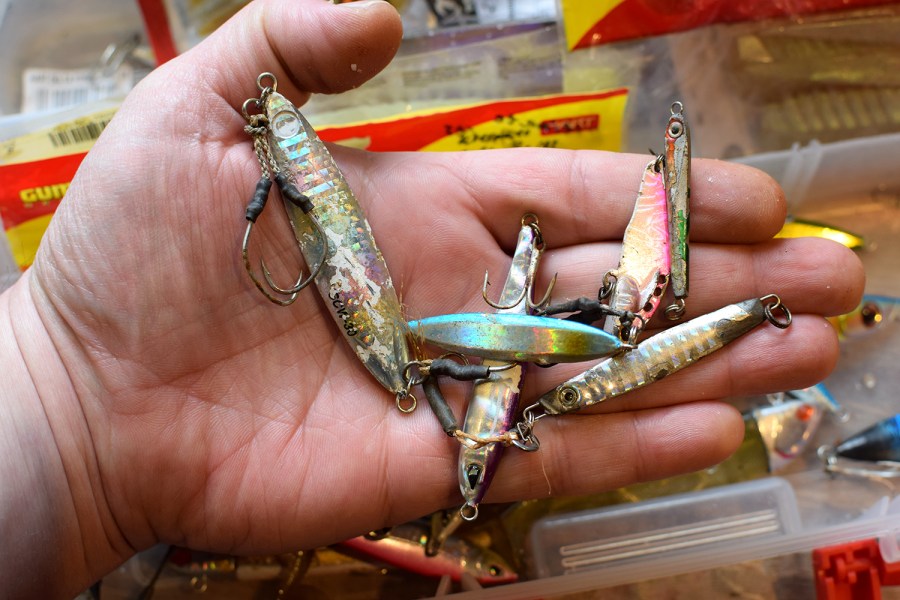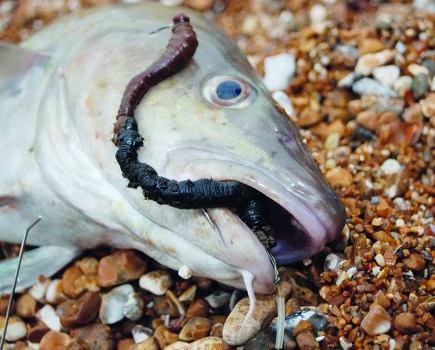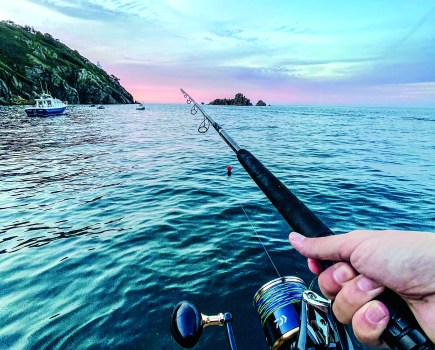It’s time to resurrect the fallen heroes of your lure collection
When I look back to the past few summers, metals have played an integral part in big catches and lots of fun. From tiny 2-3g lures for LRF to the bigger 2oz HRF metals worked in deep water, all produce fish.
These faithful frontline troops get thrown into some gnarly ground in my search for fantastic angling. Over the season those that make it back into my box after a hard session on the rocks can start to show battle scars. Those scars are worn with pride, but eventually the humble metal lure can become so chipped and dulled by fish and rocks that they languish in the bottom of the tackle box, while their shinier brethren take up the hunt.
Do they get consigned to the drawer with no name. You know the one with the left-hand gloves, the broken scissors and the mobile phone charger from 1999. The “may come in handy one day” drawer is no place for these dulled trinkets. Instead those metals can be resurrected with a bit of TLC and some basic new livery. Not only does it get them back in action, but also it can be a fun and rewarding thing to do in.
CHECK AND CLEAN LURES
One of the first steps when it comes to reorganising and assessing which metals need attention is to clean them all in warm soapy water.
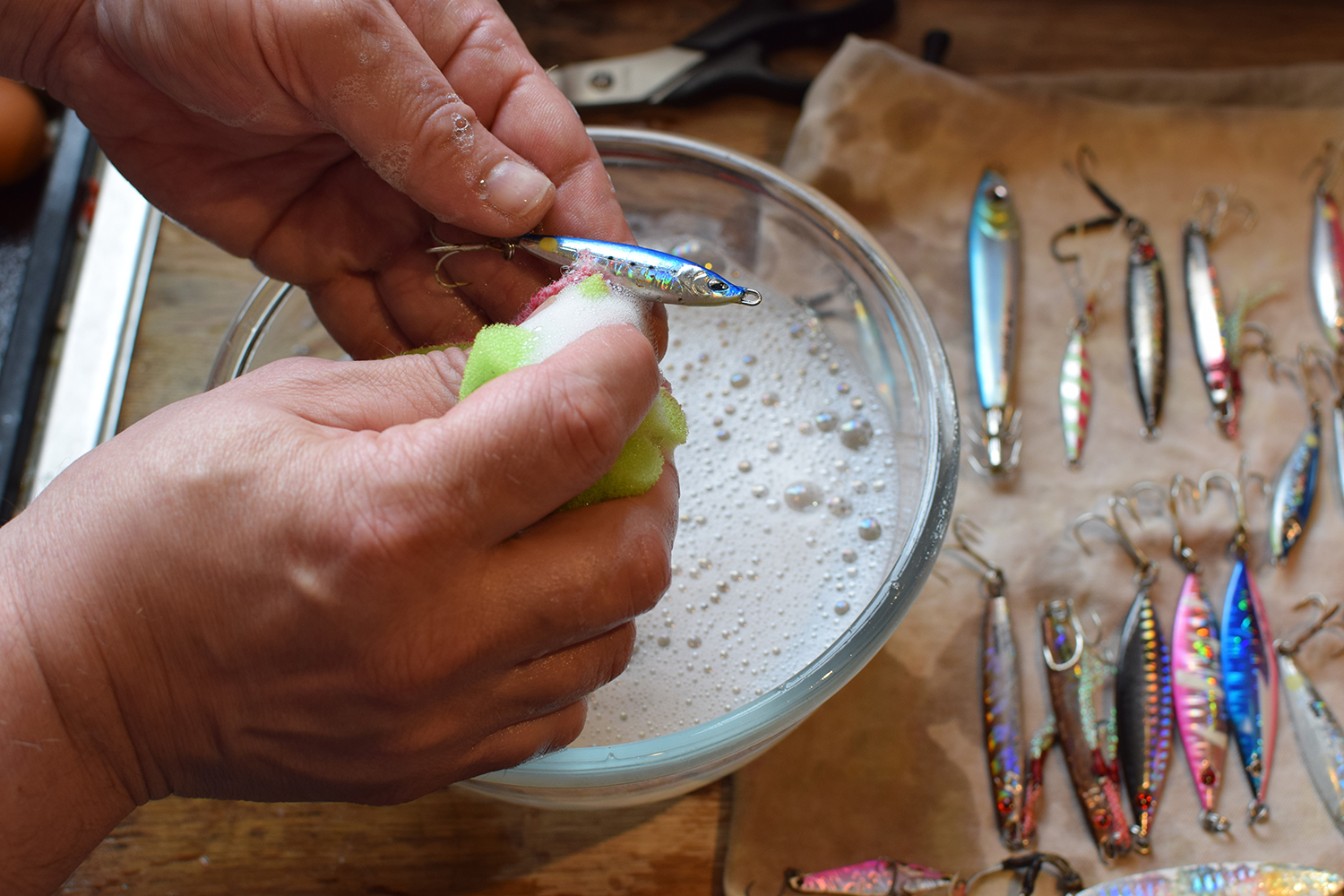
Cleaning lures in soap and water will make them shiny again
The benefits of a simple wash down are two-fold. Not only does it clean off corrosive salt so they shine brightly, but also it highlights areas of corrosion on hooks and hardware. These are the most important areas to check because even though a dull lure will catch fish, the one with corroded rings or hooks can easily let you down.
After giving them a wash, lay them out to dry before going through a proper examination. Those that are shiny and corrosion free can be put back into the box. If the hooks are at all dull, use a little hook file to sharpen the points so they are ready for action.
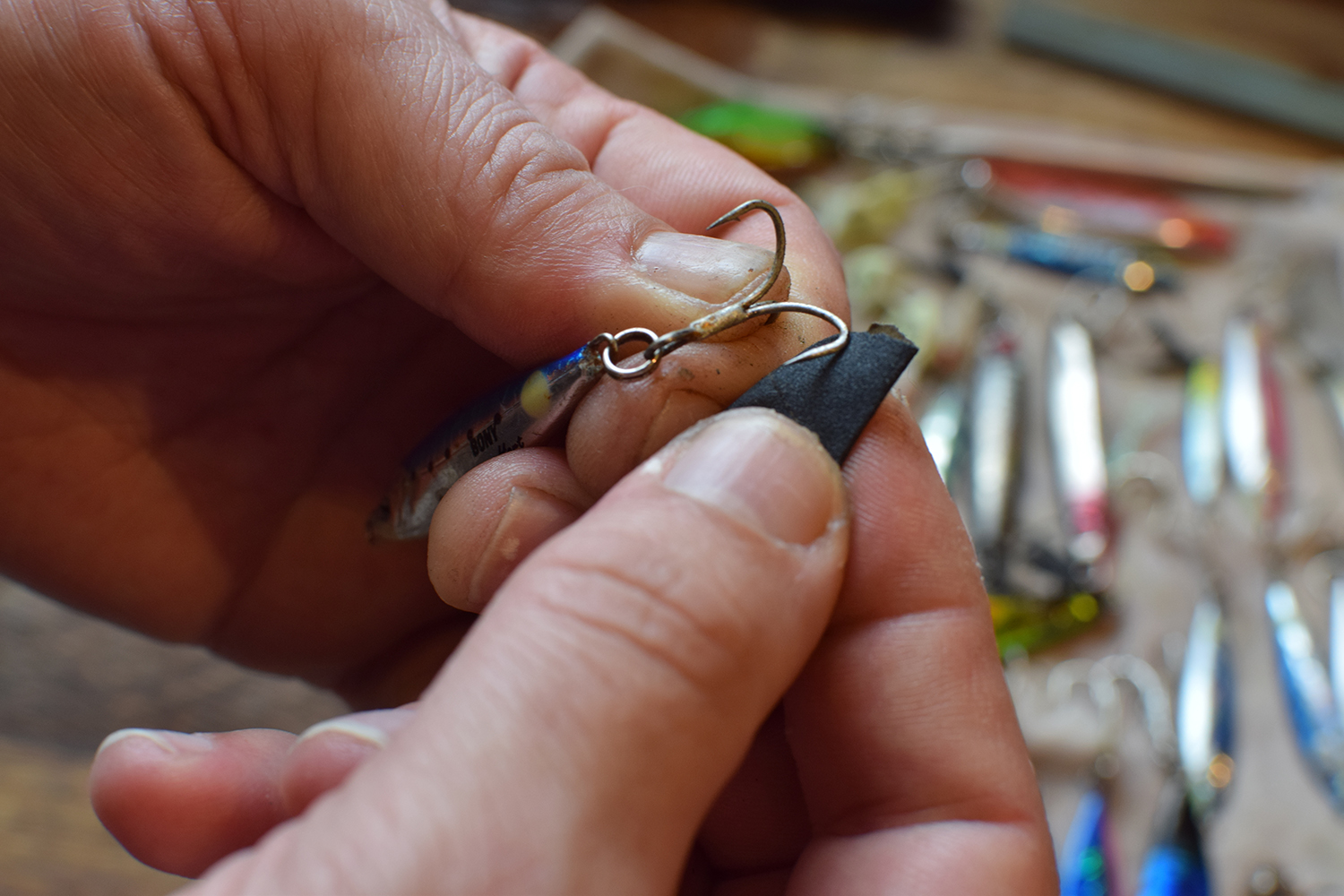
Cleaning light corrosion with wet and dry
Corrosion can be a really problem, especially on LRF-sized jig hooks. Generally, the wire gauge on a hook to match a 3-5g lure is very thin and even a small amount of corrosion can ruin a hook causing it to snap. It pays to have a good look at any you intend to use in the future.
REFURBISH
Of the cleaned lures with corrosion problems, it is fairly easy to change the hooks and split rings. In fact, it is easy to carry a small selection of hook options for your metals. With split ring pliers, it is quick and easy to change how the metal is rigged, either by replacing hooks with trebles, singles or even assist hooks. You can use your nail to ease open a split ring, but life is always much easier with the correct tools.
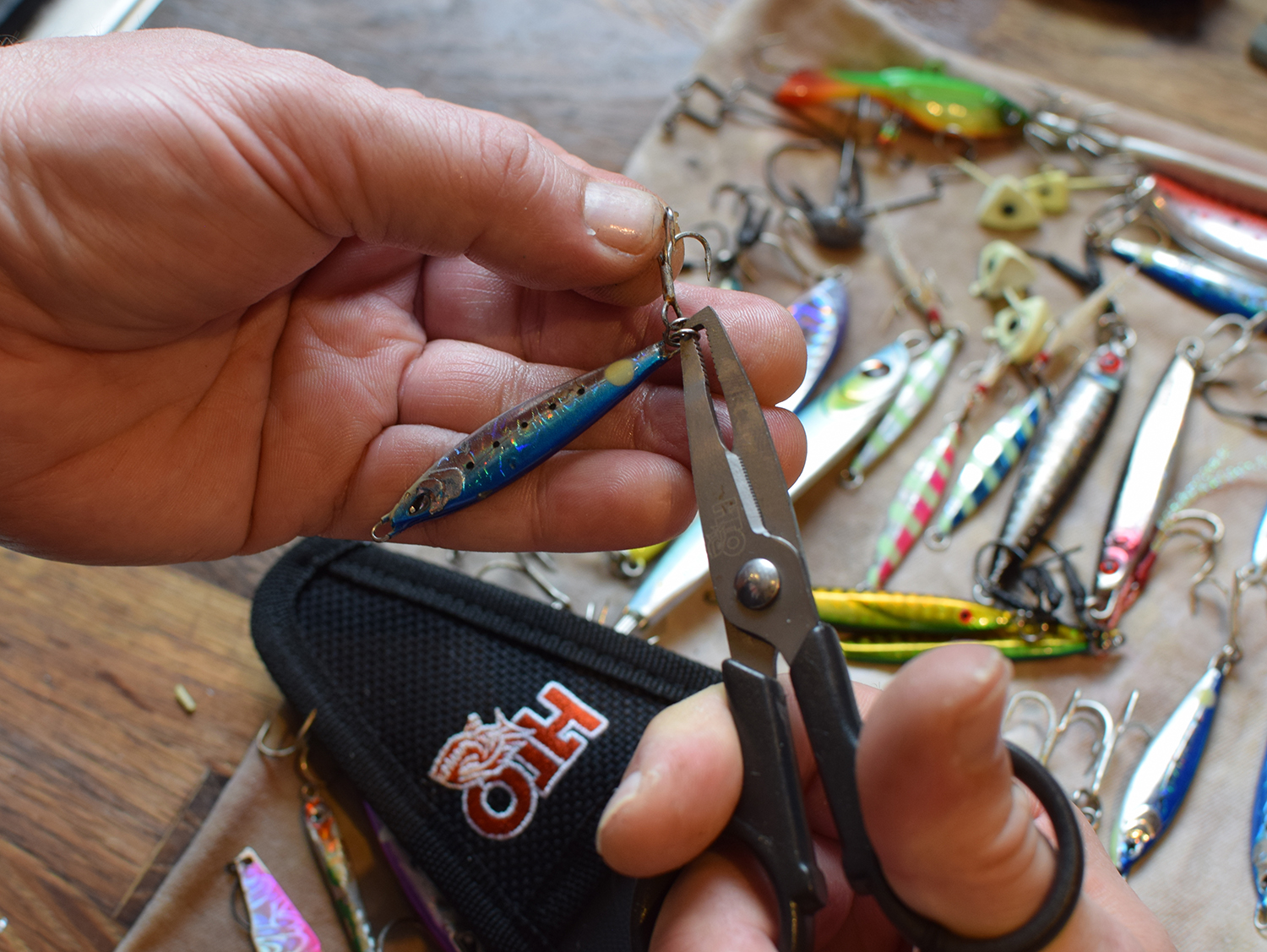
Removing old hooks with split ring pliers
I am a big fan of putting single hooks on metals in place of a tail treble. If you do not want an assist hook, then a single tail-mounted hook can make the lure remarkably snag free (compared to a treble hook) without any noticeable decrease in hook-ups.
There are some excellent pre-tied assist hooks for metals, such as from BKK, including a range of double-rigged assists and some more simple singles. They come with good diagrams of the rigs to use. The mere act of adding these pre-tied assists or singles can rejuvenate a lure.
BRING BACK THE FLASH
A season of rattling lures off rocks and reefs can soon chip away precious paint jobs. When this happens, it will either require some painting or as an alternative re-foiling. The latter is the simplest, cheapest and quickest way to get a great effective finish to a paintless lure.
This is especially true if you buy some adhesive foil tape, which can even allow you to do quick fixes when fishing. There are plenty of foils available. I got my foil from the Glasgow Angling Centre. Applying it to a lure is very easy, all you have to do is ensure the lure is clean and grease free. Simply use the lure as a template and draw around it. Then cut out the shape, peel off the backing and stick on the foil. Smooth it down as it is applied to get out any bubbles.
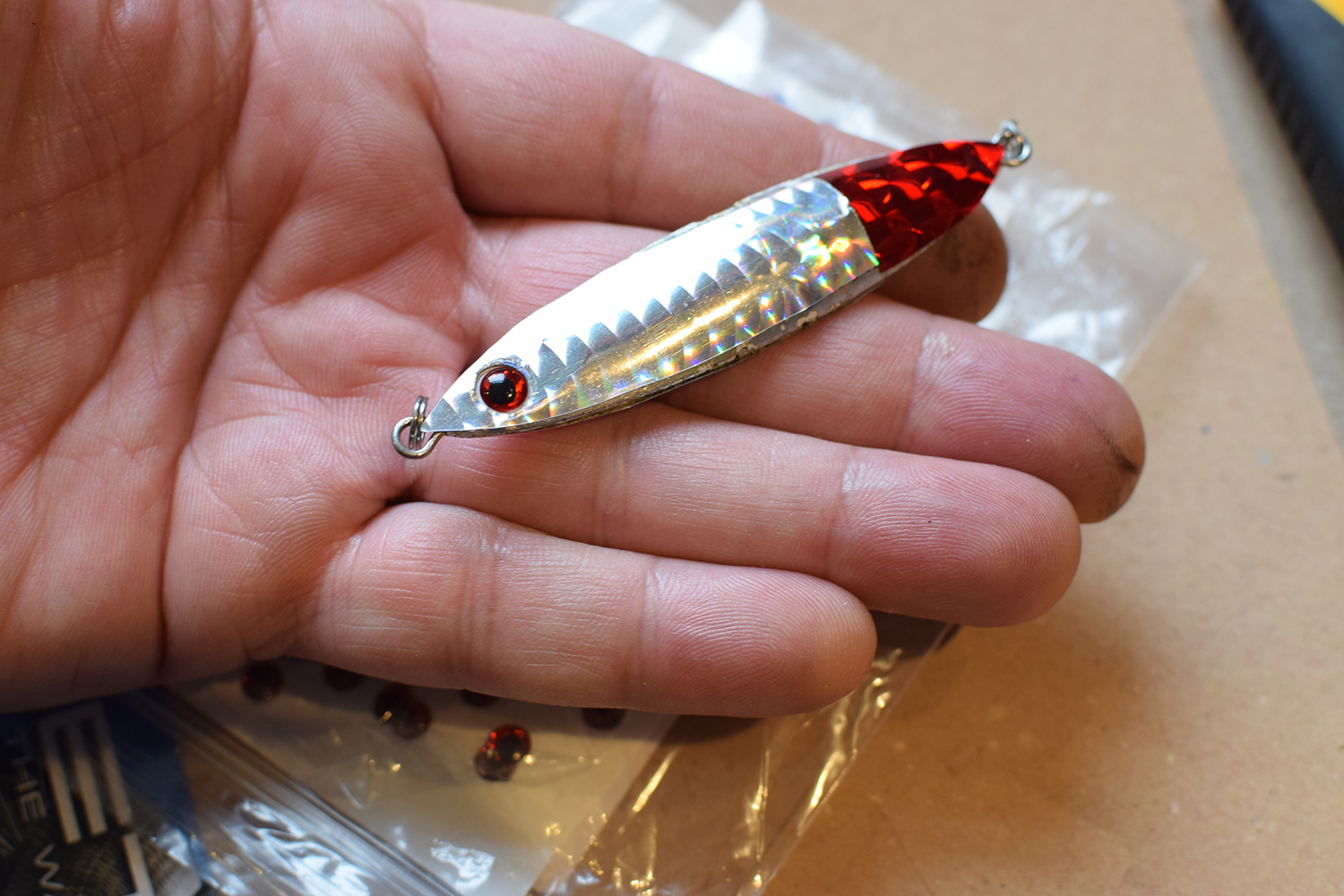
Foiled lure
In order to keep the finish and stop the foil from coming off, it is best to apply a clear protective top coat on it before fishing. I use an ultra-violet cure epoxy resin, but clear epoxy should do the job.
If you have paints and airbrushes you can really go to town and shade over the edges to the foil to get a professional finish.
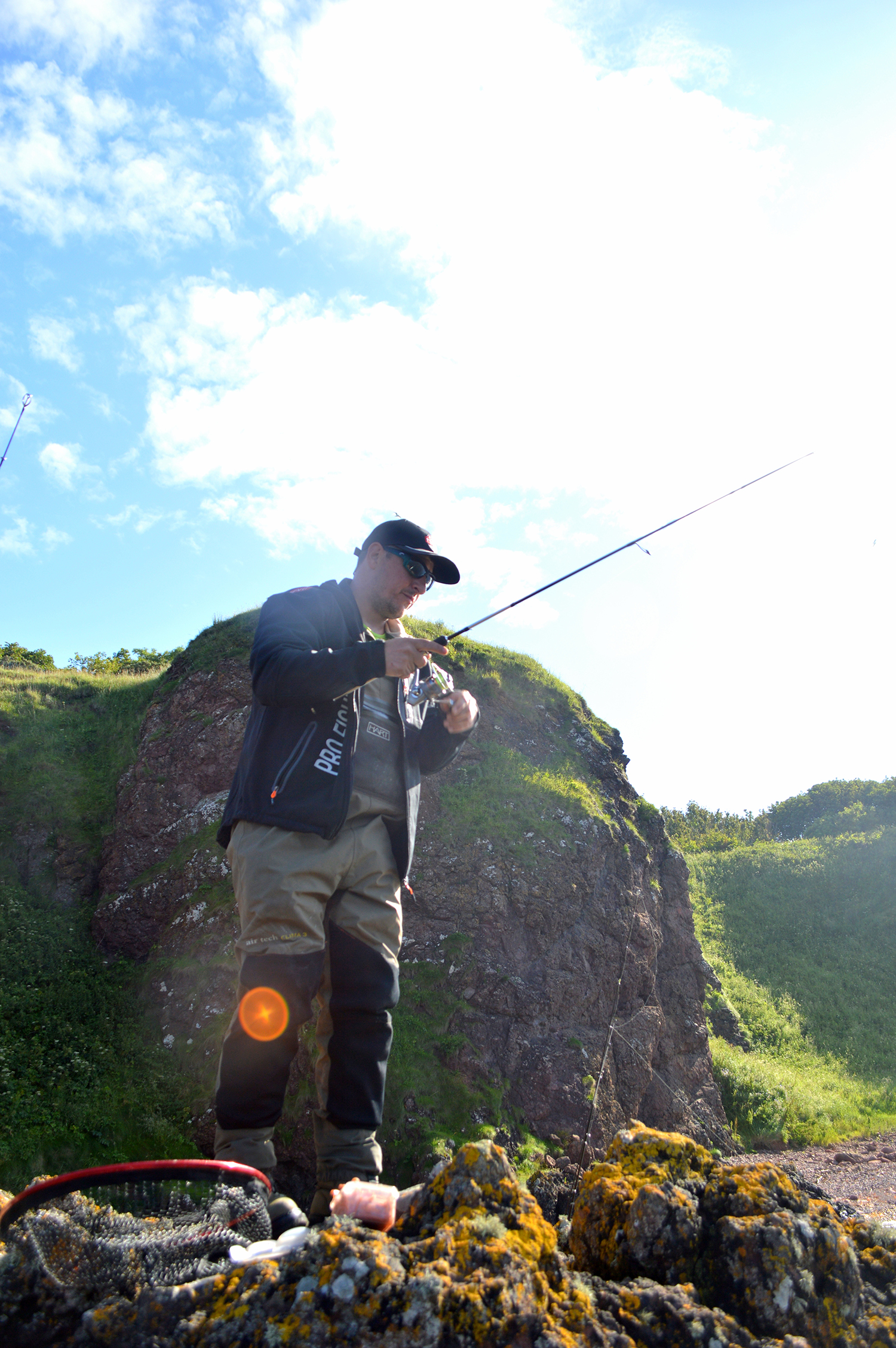 EXPLOSIVE ACTION
EXPLOSIVE ACTION
With your lures ready to fish, it is important to know that this selection of metals from 3-30g will continue to be effective for at least the next six months, so keeping them fishing will be very important.
When the small baitfish arrive inshore it signals an explosion of predator activity. This lasts for months in the sea and if you can find the sprats you will find a whole host of other fish feeding on them.
These small metals can match the sprats brilliantly. Jigging light metals around the edges of these shoal can bring you explosive action from everything from mackerel through to bass, coalfish and even squid.
Head to our Tips and Tactics section
Subscribe to Sea Angler today

